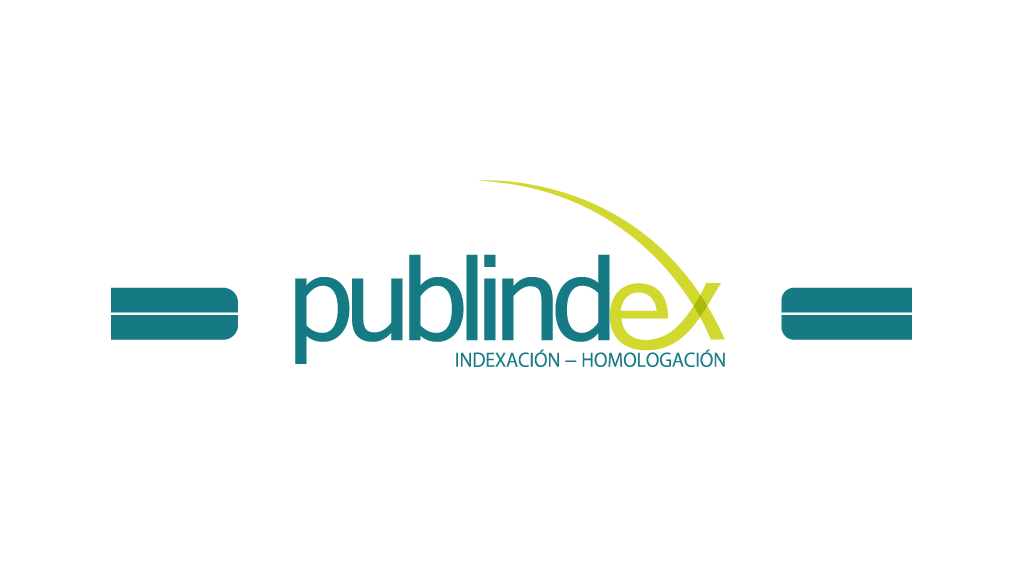Authors who publish in this journal agree to the following terms:
Acta Colombiana de Psicología complies with international intellectual property and copyright laws, and particularly with Article No. 58 of the Political Constitution of Colombia, Law No. 23 of 1982, and the Agreement No. 172 of September 30, 2010 (Universidad Católica de Colombia Intellectual Property Regulation).
Authors retain their copyright and grant to the Acta Colombiana de Psicología the right of first publication, with the work registered under Creative Commons attribution license, which allows third parties to use the published material, provided they credit the authorship of the work and the first publication in this Journal.
Abstract
This paper aimed to establish evidence of validity and reliability of the adapted version of the MOSS-SAST questionnaire (Ahmed, 1999) to measure shame management in adolescents in situations of aggression toward peers. The study was conducted with a sample of 700 students from public secondary schools (N= 700) located in a northwestern state municipality of Mexico. Results enabled to obtain an empirically sustainable measuring model formed by two factors: Acknowledgment and Displacement (X2 = 5.16, p= 0.27; CMIN= 1.29; GFI= .98; CFI= .99; NFI= .97; RMSEA= .05). Evidence was obtained to show that the instrument has criterion validity since it is capable to differentiate between subgroups of students with and without reports of bullying in both factors, Acknowledgment (t= 3.49, gl= 137, p< .001) and Displacement (t= 3.63, gl= 137, p< .001). It was concluded that the results strengthen the original factorial structure of the scale and show the usefulness of the same, both for inquiring about emotions related to moral development and for identifying students involved as aggressors in bullying situations.
Keywords

References
Ahmed, E. (1999). Shame management and bullying (Tesis Doctoral, The Australian National University, Canberra, Australia). Recuperada de https://digitalcollections.anu.edu.au/bitstream/1885/10624/1/01Front_Ahmed.pdf
Ahmed, E., & Braithwaite, V. (2004). “What, Me Ashamed?” Shame management and school bullying. Journal of Research in Crime and Delinquency, 41, 269-294. http://dx.doi.org/10.1177/0022427804266547
Ahmed, E., & Braithwaite, V. (2006). Forgiveness, reconciliation, and shame: Three key variables in reducing school bullying. Journal of Social Issues, 62, 347-370. http://dx.doi.org/10.1111/j.1540-4560.2006.00454.x
Allen, K. (2010). Classroom management, bullying, and teacher practices. The Professional Educator, 34(1), 1-16.
Arsenio, W. (2014). Moral emotion attributions and aggression. En M. Killen & J. Smetana (Eds.), Handbook of moral development (2da ed., pp. 235-255). New York, USA: Psychological Press.
Aslund, C., Starrin, B., Leppert, J., & Nilsson, K. (2009). Social status and shaming experiences related to adolescent overt aggression at school. Aggressive Behavior, 35, 1-13. http://dx.doi.org/10.1002/ab.20286
Bandura, A. (2002). Selective moral disengagement in the exercise of moral agency. Journal of Moral Education, 31, 101–119. http://dx.doi.org.10.1080/0305724022014322
Blaya, C., Debarbieux, E., Del Rey, R., & Ortega, R. (2006). Clima y violencia escolar. Un estudio comparativo entre España y Francia. Revista de Educación, 339, 293-315.
Blunch, N. (2013). Introduction to structural equation modeling using IBM SPSS Statistics and Amos (2nd ed.). Londres: SAGE Publications Ltd.
Braithwaite, J. (1989). Crime, shame and reintegration. Cambridge, UK: Cambridge University Press.
Braithwaite, J., & Braithwaite, V. (2001). Shame, shame management and regulation. Shame management through reintegration. En E. Ahmed, N. Harris, J. Braithwaite & V.
Braithwaite (Eds.), Shame management through reintegration (pp. 3-69). Cambridge, UK: Cambridge University Press.
Cárdenas, M., & Arancibia, H. (2014). Potencia estadística y cálculo del tamaño del efecto en G Power: Complementos a las pruebas de significación estadística y su aplicación en psicología. Salud y Sociedad, 5(2), 210-224.
Castillo, C., & Pacheco, M. (2008). Perfil del maltrato (bullying) entre estudiantes de secundaria en la ciudad de Mérida, Yucatán. Revista Mexicana de Investigación Educativa, 13(38), 825-842.
Cea, M. (2004). Análisis multivariable. Teoría y práctica en la investigación social. Madrid: Síntesis.
Collie, R., Shapka, J., & Perry, N. (2011). Predicting teacher commitment: The impact of school climate and social-emotional learning. Psychology in the Schools, 48, 1034-1048. http://dx.doi.org/10.1002/pits.20611
Coloroso, B. (2004). The bully, the bullied, and the bystander: From preschool to high school-how parents and teachers can help break the cycle of violence. New York: Harper Collins Publishers.
De Vellis, R. (2012). Scale development. Theory and applications (3rd ed.). Thousand Oaks, California: SAGE.
Del Río, J., Bringue, X., Sádaba, C., & González, D. (2009). Cyberbullying: Un análisis comparativo en estudiantes de Argentina, Brasil, Chile, Colombia, México, Perú y Venezuela.
Ponencia en extenso, V Congrés Internacional Comunicació I Realitat, Universidad de Navarra, España. Recuperado de http://hdl.handle.net/10171/17800
Einsenberg, N. (2000). Emotions, regulation, and moral development. Annual Review of Psychology, 51, 665-697. http://dx.doi.org/10.1146/annurev.psych.51.1665
Eisenberg, N., Eggum, N., & Di Giunta, L. (2010). Empathyrelated responding: Associations with prosocial behavior, aggression, and intergroup relations. Social Issues and Policy Review, 4, 143-180. http://dx.doi.org/10.1111/j.1751-2409.2010.01020.x
Eljach, S. (2011). Violencia escolar en América Latina y el Caribe: Superficie y fondo. Panamá: Plan International/UNICEF.
Gilligan, J. (1996). Exploring shame in special settings: A psychotherapeutic study. En C. Cordess & M. Cox (Eds.), Forensic psychotherapy: Crime, psychodynamics & the offender patient (pp. 475-489). London, UK: Jessica Kingsley Publishers.
Hair, J., Anderson, R., Tatham, R., & Black, W. (1999). Análisis Multivariante (5ta ed.). Madrid: Prentice-Hall.
Haro, I., García, B., & Reidl, L. (2013). Experiencias de culpa y vergüenza en situaciones de maltrato entre iguales en alumnos de secundaria. Revista Mexicana de Investigación Educativa, 18(59), 1047-1075.
Harris, N. (2001). Shaming and shame: Regulating drinkdriving. En E. Ahmed, N. Harris, J. Braithwaite & V. Braithwaite (Eds.), Shame management through reintegration (pp. 73-210). Cambridge, UK: Cambridge University Press.
Hinnant, J., Nelson, J., O’Brien, M., Keane, S., & Calkins, S. (2013). The interactive roles of parenting, emotion regulation and executive functioning in moral reasoning during middle childhood. Cognition and Emotions, 25, 1460-1468. http://dx.doi.org/10.1080/02699931.2013.789792
Instituto Nacional para la Evaluación de la Educación (2007). Disciplina, violencia y consumo de sustancias nocivas a la salud en escuelas primarias y secundarias de México. México: INEE.
Jolliffe, D., & Farrington, D. (2007). Examining the relationship between low empathy and self-reported offending. Legal and Criminological Psychology, 12, 265-286. http://dx.doi.org/10.1348/135532506x147413
Kochenderfer-Ladd, B., Ladd, G., & Kochel, K. (2009). A child and environment framework for studying risk for peer victimization. En M. Harris (Ed.), Bullying, rejection, & peervictimization: A social cognitive neuroscience perspective (pp. 27-52). New York, N.Y.: Springer Publishing Company.
Lemerise, E., & Arsenio, W. (2000). An integrated model of emotion processes and cognition in social information processing. Child Development, 71, 107-118. http://dx.doi.org/10.1111/1467-8624.00124
Lewis, M. (1992). Shame: The exposed self. New York: The Free Press.
Lucio, L. (2009). El cyberbullying en estudiantes del nivel medio superior en México, Ponencia en extenso X Congreso Nacional de Investigación Educativa, Veracruz, México, COMIE.
Martínez, M., Hernández, M., & Hernández, M. (2009). Psicometría. Madrid: Alianza Editorial.
Menesini, E., & Camodeca, M. (2008). Shame and guilt as behaviour regulators: Relationships with bullying, victimization and prosocial behaviour. British Journal of Developmental Psychology, 26, 183-196. http://dx.doi.org/10.1348/026151007x205281
Menesini, E., Palladino, B., & Nocentini, A. (2015). Emotions of moral disengagement, class norms and bullying in adolescence: A multinivel approach. Merril-Palmer Quaterly, 61(1), 124-143.
Morrison, B. (2006). School bullying and restorative justice: Toward a theoretical understanding of the role of respect, pride, and shame. Journal of Social Issues, 62, 371-392. http://dx.doi.org/10.1111/j.1540-4560.2006.00455.x
Olthof, T. (2012). Anticipated feelings of guilt and shame as predictors of early adolescents’ antisocial and prosocial interpersonal behaviour. European Journal of Developmental Psychology, 9, 371-388. http://dx.doi.org/10.10.80/17405629.2012.680300
Olweus, D. (1993). Bullying at school. What we know and what we can do. UK: Wiley-Blackwell Publishing.
Organización de las Naciones Unidas para la Educación la Ciencia y la Cultura /Laboratorio Latinoamericano de Evaluación de la Calidad de la Educación (2012). Análisis del clima escolar ¿Poderoso factor que explica el aprendizaje en América Latina y el Caribe? Santiago de Chile: Oficina Regional de Educación para América Latina y el Caribe (OREALC/UNESCO).
Ortega, R. (2010). Treinta años de investigación y prevención del “bullying” y la violencia escolar. En R. Ortega (Ed.), Agresividad injustificada, bullying y violencia escolar (pp. 15-32). Madrid: Alianza Editorial.
Ortega, R., Sánchez, V., Ortega, J., Del Rey, R., & Genebat, R. (2005). Violencia escolar en Nicaragua. Un estudio descriptivo en escuelas primarias. Revista Mexicana de Investigación Educativa, 10(26), 787-804.
Perren, S., Gutzwiller-Helfenfinger, E., Malti, T., & Hymel, S. (2012). Moral reasoning and emotion attributions of adolescent bullies, victims, and bully-victims. British Journal of Developmental Psychology, 30, 511-530. http://dx.doi.org/10.1111/j.2044-835X.2011.02059.x
Pontzer, D. (2009). A theoretical test of bullying behavior: Parenting, personality, and the bully/victim relationship. Journal of Family Violence, 25, 259-273. http://dx.doi.org/10.1007/s10896-009-9289-5
Postigo, S., González, R., Montoya, I., & Ordóñez, A. (2013).
Propuestas teóricas en la investigación sobre acoso escolar: Una revisión. Anales de Psicología, 29, 413-425. http://dx.doi.org/10.6018/analesps.29.2.148251
Raviv, A., Erel, O., Fox, N., Leavitt, L., Raviv, A., Dar, I., Shahinfar, A., & Greenbaum, C. (2001). Individual measurement of exposure to everyday violence among schoolchildren across various settings. Journal of Community Psychology, 29, 117-140. http://dx.doi.org/10.1002/1520-6629(200103)29:2 <117::AID-JCOP1009>3.0.CO;2-2
Robers, S., Zhang, J., Truman, J., & Snyder, T. (2012). Indicators of School Crime and Safety: 2011 [NCES 2012-002/NCJ 236021]. Washington, D.C: National Center for Education Statistics/U.S. Department of Education/Bureau of Justice Statistics.
Román, M., & Murillo, J. (2011). América Latina: Violencia entre estudiantes y desempeño escolar. Revista CEPAL, 104, 37-54.
Scheff, T. (1995). Editor’s introduction: Shame and related emotions: An overview. American Behavioral Scientist, 38, 1053-1059. http://dx.doi.org/10.1177/0002764295038008002
Scheff, T., & Retzinger, S. (2002). Emotions and Violence: Shame and Rage in Destructive Conflicts. Lexington, MA: Lexington Books/D. C. Heath.
Solberg, M., & Olweus, D. (2003). Prevalence estimation of school bullying with the Olweus Bully/Victim Questionnaire. Aggressive Behavior, 29, 239-268. http://dx.doi.org/10.1002/ab.10047
Swearer, S., Espelage, D., & Napolitano, S. (2009). Bullying Prevention and Intervention: Realistic Strategies for Schools. New York: The Guilford Press.
Tangney, J. (1995). Recent advances in the empirical study of shame and guilt. American Behavioral Scientist, 38, 1132-1145. http://dx.doi.org/10.1177/0002764295038008008
Tangney, J., Baumeister, R., & Boone, A. (2004). High selfcontrol predicts good adjustment, less pathology, better gra des, and interpersonal success. Journal of Personality, 72, 271-324. http://dx.doi.org/10.1111/j.0022-3506.2004.00263.x
Tangney, J., Stuewig, J., & Mashek, D. (2007). Moral emotions and moral behavior. Annual Review of Psychology, 58, 345-372. http://dx.doi.org/10.1146/annurev.psych.56.091103.070145
Ttofi, M., & Farrington, D. (2008). Reintegrative shaming theory, moral emotions and bullying. Aggressive Behavior, 34, 352-368. http://dx.doi.org/10.10.02/ab.20257
Valdés, A., & Carlos, E. (2014). Relación entre el autoconcepto social, el clima familiar y el clima escolar con el bullying en estudiantes de secundarias. Avances de Psicología Latinoamericana, 32, 447-457. http://dx.doi.org/10.12804/apl32.03.2014.07
Valdés, A., Carlos, E., Tanori, J., & Wendlandt, T. (2014). Differences in types and technological means by which Mexican high school students perform cyberbullying: Its relationship with traditional bullying. Journal of Educational and Developmental Psychology, 4, 105-113. http://dx.doi.org/10.5539/jedp.v4n1p105
Valdés, A., Carlos, E., & Torres, G. (2012). Diferencias en la situación socioeconómica, clima y ajuste familiar de estudiantes con reportes de bullying y sin ellos. Psicología desde el Caribe, 29(3), 616-631.
Vázquez, R., Villanueva, A., Rizo, A., & Ramos, M. (2005). La comunidad de la preparatoria 2 de la universidad de Guadalajara. Actitudes de sus miembros con respecto a la violencia y no violencia escolar. Revista Mexicana de Investigación Educativa, 10(27), 1047-1070.
Vega, M., González, G., & Quintero, P. (2013). Ciberacoso: Victimización de alumnos en escuelas secundarias públicas de Tlaquepaque, Jalisco, México. Revista Educación y Desarrollo, 25(2), 13-20.
Velázquez, L. (2009). Cyberbullying. El crudo problema de la victimización en línea, Ponencia en extenso, X Congreso Nacional de Investigación Educativa, Veracruz, México, COMIE.































